London Plasterers: Whenever there's plastering work to be done on your property in London, whether large or small, you should be calling on a qualified and professional plasterer to accomplish this task. It can take several years to perfect the art of plastering, so it is not advisable for you to try to do it yourself.
There are lots of home improvement assignments, even small ones, which result in some plastering work needing to be done. It could be the likes of latex screeding, installing coving or decorative mouldings before decorating, plaster skimming dry lining or plastering over an old artexed ceiling. In actual fact, it could possibly be any of dozens of plastering related tasks.

Looking at a portfolio of successfully accomplished projects is an effective way to judge the quality of any potential London plasterers, you need to get somebody who knows exactly what they're up to. You certainly don't want to be hiring a "cowboy" for this sort of work. It is very difficult to correct substandard plastering after it's been completed, therefore it should be done right from the outset.
Any imperfections will become blindingly obvious as soon as a bit of emulsion starts going on to your freshly plastered walls and ceilings. Your newly plastered surfaces will appear even worse with the sunlight shining on them. You will avoid this problem by only choosing from experienced plasterers in London.
You must never forget that plaster is simply a base on which other products are applied, so it should be flat and smooth. It's quite easy to fill and repair any negligible dents and cracks, however it's difficult to disguise inherently irregular plaster. A shoddily plastered area will cause major issues with the installation of kitchen units, bathroom or kitchen tiling, the painting of the surfaces and the accurate fitting or skirting boards.
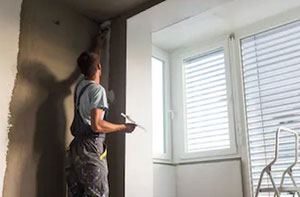
What you actually need is a perfect, polished finish right from the trowel, and the best London plasterers can be expected to produce these types of results. You should be able to tell when plastering has been done by an expert, because a quick rub down is all that is needed and no sanding is necessary. If strenuous sanding is necessary, you can safely assume that your plastering has not been done properly. The alarm bells should certainly be ringing if electric sanding machines are being used with any frequency.
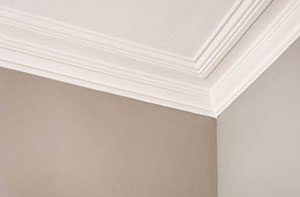
Whilst you may call on the services of a plasterer for many tasks, a common reason these days is for plastering over old artexed ceilings. At the height of its popularity in the 1970's and 1980's, artex is out of favour in London homes right now. To get all your old artexed ceilings looking sleek and contemporary again, most London plasterers will jump at the chance to plaster over them. If you're a bit retro in your taste, you may want to give your currently smooth ceilings some character by actually putting on artex.
DIY Plastering London: While it's always better to bring in a competent plasterer in London when you have plastering work that should be done in your home or business premises, it is quite possible to have a shot at doing it yourself if you're really good at DIY, and have the self-confidence to tackle it. As a novice plasterer it is a wise idea to begin your plastering adventure by maybe doing a test run on an out-of-sight area or a spare bedroom, especially one that already has a poorly plastered surface and cannot be made worse by your endeavours. This should enable you to relax and get comfortable with the required processes and will be significantly less stressful. To a certain degree, it is possible for you to re-skim a wall as many times as you wish, therefore if you make a hash of it to start with, you can just re-do it as your expertise improves.

If you do not wish to go to the extreme length of signing up for an actual plastering course, you will be able to get some outstanding tips by watching and studying YouTube tutorials, although it isn't always as simple as they make it look in those videos. Like most "hands on" processes, the more you practice the more accomplished you get at plastering. Through trial and error you may even think up you own solutions for getting that perfect plastered finish. But if you're uncertain, stick with the tried and true procedures. The more often you do it the more confident you will get, and let's face it - plastering is mainly about confidence. You should be able to start plastering the other walls of your property once you have mastered this art to a level you are satisfied with. If the whole thing goes pear shaped and you mess up the plastering, you can always hire a professional plasterer to correct your mistakes.
Plastering work can be done in London and also in nearby places like: Barnet, Waltham Forest, Bexley, Hackney, Havering, Islington, Victoria, Belgravia, Churchill Gardens, Brent, Kingston upon Thames, Vauxhall, Mayfair, Haringey, Hounslow, Pimlico, Covent Garden, Kensington, Bromley, Waterloo, Whitehall, Camden, St James's, Greenwich, Croydon, Shepherds Bush, Knightsbridge, Southwark, together with these postcodes NW1 5GH, NW1 4QA, NW1 5EZ, NW1 4SY, NW1 4PJ, NW1 5DU, NW1 5ET, NW1 5BA, NW1 5DH, and NW1 5BD. It's likely that any plastering specialists in the London district will have the postcode SW1 and the telephone dialling code 020. This is useful to know if you want to confirm that you are hiring a local expert in plastering. London householders are spoilt for choice when looking for plastering.
Artexing London

Even though artex isn't as popular these days as it was in the 70's and 80's it's still a good way to enhance the look of a cracked or uneven ceiling. It is not quite as simple to track down a plasterer that will do artexing at the moment, where at one time you would find tons of tradespeople who did very little else but artex and artex patching. The thing that enhanced its popularity was possibly the a wide variety of styles and designs it was fashioned in, and it seemed that everyone had their favourite style, possibly it was broken leather, criss-cross, swirl, medusa, basket & roses, stippled, bark, pairs, circle, hook & line or scroll. Artex patterns were available to fit any personal preference or taste. It's obviously still perfectly possible to get any one of these artex ceiling patterns done today, you will just have to locate a craftsman (a plasterer and not a handyman) willing to do it. Having said all that, it should be pointed out that artex is somewhat challenging to repair or patch and it's almost certainly because of this that its use declined.
Plastering Courses London

The most effective way to either learn the fundamentals of plastering or to obtain the necessary knowledge and skills to begin a career in plastering is to register for a plastering course at a local training centre or college. For both complete beginners and those eager to improve their plastering skills, you will find that there are a wide range of plastering related courses on offer. Plastering courses are offered in both City and Guilds and NVQ with choices for either intermediate tradespeople or total newbies. Beginners courses (level 1) tackle such things as putting on floating coats, making ready background surfaces, applying scratch coats, mixing plaster products, putting on set coats (wall surfaces) and fixing sheet materials. Advanced (level 2 courses and diplomas) cover such things as dry lining/plasterboarding, fibrous plasterwork, plastering to external backgrounds, reverse moulding for fibrous work and sand and cement screed laying. For currently available plastering courses in London and around Greater London, search on Google. You can learn about five day intensive plastering courses by going here. (Tags: Beginners Plastering London, Plasterers Courses London, Plastering Lessons London, Plastering Courses London)
Polished Plaster London
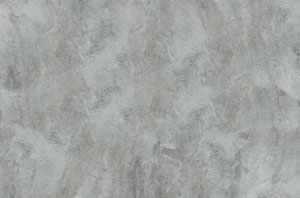
Exceptionally favoured nowadays, polished plaster is a contemporary rendition of timeless Italian plaster finishes. Covering anything from more rugged looking textured plasters to highly polished Venetian, Lucidato and Marmorino plasters, the name "Polished Plaster" in fact covers a wide array of good quality plaster finishes. Polished plaster is predominantly used on interior walls and ceilings, to give a finished surface that appears like polished limestone, travertine or marble. Polished plaster is smooth to the touch whilst offering natural variations of shade and a distinct feeling of depth. By the combining of these different forms of plaster compounds it is quite possible to produce distinct bespoke finishes which can be utilized to great effect. By using synthetic or natural colourants, eye-catching tints or colours can be applied to the polished plaster finish. This is particularly advantageous when trying to obtain "marbled" effects or to produce designs and colours that don't exist naturally. To find out more regarding polished plaster, check out Wikipedia (here). (Tags: Polished Plasterer London, Venetian Plaster London, Polished Plaster London, Marbled Plaster London)
Tools for Plastering
Most do-it-yourself and tradespeople's tool boxes don't contain many of the tools that are needed for plastering, which is the reason it's generally better to seek the help of a specialist plasterer in London, when you have this type of work that needs to be done. The following are just a few of the tools that an experienced London plasterer will work with:
- Plaster Pan & Buckets
- Finishing Trowel
- Scarifier
- Plastering Rule
- Dry Lining Rasp
- Board & Door Lifter
- Plasterer's Trowel
- Edging Trowel
- Plaster Mixing Paddle
- Plasterer's Hawk
- Taping & Jointing Knives
- Feather Edge
Decorative Plastering
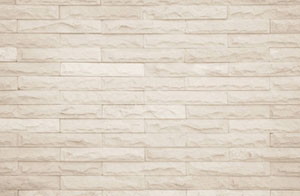
As a technique for embellishing and protecting wall surfaces, plastering has been around since the days of the ancient Greeks, Egyptians and Romans. The ingredients used would naturally have differed in those long gone days, when mixtures of mud and clay would have been applied. To help stop fires from spreading in 13th century London, a kind of plaster was put on the internal walls of houses and shops. As you'll observe when you go to visit buildings from this time period, highly decorative plaster of Paris features and mouldings were extensively produced in Georgian and Victorian times. In these modern times, expert plasterers are able to produce amazing decorative effects using age-old techniques coupled with modern materials. Such decoration take many forms and will incorporate the installation of cornices, niches, ceiling roses, coving, brackets, corbels and dentils. (Tags: Plastering Finishes London, Decorative Plastering London, Plastering Effects London, Plaster Mouldings London)
Pebble Dashing

Love it or hate it pebbledashing has been around for many years and used to decorate and protect the outside of properties in Greater London. There are people who specialise in pebble dashing out there, but now and again London plasterers will do this kind of work for you. Perfect for both new and renovated homes, pebble dash typically consists of a couple of layers of a base made from sand and lime onto which small pebbles or gravel are pressed to create a strong, decorative and maintenance free finish. (Tags: Pebble Dash London, Pebble Dash Removal London, Pebble Dashers London, Pebble Dashing London)
Plasterboarding London (Dry Lining)

There are a lot of home remodeling assignments that will need dry lining to be done, and some London plasterers will be willing to do this for you. An approach which produces a stable wall surface that doesn't need to be plastered, dry lining is fixed to a brick or masonry surface, metal Gypframe or a wooden studding. Occasionally the plasterboard itself is decorated, although mostly it will be skimmed with a thin coat of finishing plaster, that can be papered or painted without filling. In terms of fittings, when fixing to a metal framework self-drilling, self tapping (Jack-Point screws) are used, when fixing to a brickwork or masonry wall "dot and dab" bonding compound is used and when fixing plasterboard to timber studding or joists, drywall screws or nails are used. (Tags: Dry Lining London, Plasterboarding London, Dry Liners London)
Rendering
A popular method for enhancing a property's exterior is rendering, which brings both functional and aesthetic perks. This process includes applying a protective coating - usually a mix of cement, lime, or acrylic - to your external walls. Acting as a shield, this layer helps fend off damage from wind, rain, and frost. On top of that, it presents your home with a fresh, modern vibe, with various finishes and colours to choose from that fit your taste. Whether you're giving an old property a facelift or improving a newer one, rendering is a practical yet visually appealing choice.

Rendering offers more than just cosmetic benefits; it can actually boost your home's overall performance too. A lot of modern render systems include insulating properties, which assist in keeping the interior warm in winter and cool in summer. This extra layer of insulation not only enhances comfort but can also help lower energy bills over time. Additionally, rendering works to seal up cracks and imperfections in the walls, reducing the chances of dampness or water ingress that might lead to costly repairs in the future. It's a lasting solution that safeguards and maintains your property in London.
To achieve the best outcome, it's wise to consult a professional who can recommend the most suitable materials and techniques for your property. Experts have the skills to apply render with precision, resulting in a smooth, long-lasting finish. They'll also advise you on maintenance, helping to keep your rendered walls looking their best for years. From selecting the right colour and texture to ensuring the render suits your local climate, their expertise can make all the difference. With careful planning and expert application, rendering can transform your home in London, adding protection, insulation, and value. (Tags: Rendering London).
Plaster

Plaster is a building material which is used for protecting or decorating walls and ceilings in London, and for producing decorative elements. The expression "plaster" usually relates to a material that is utilized on the insides of homes in the UK. The material which is used for for outside walls is termed "render". Plaster blends generally contain either gypsum, lime, or cement, all of which work in pretty similar ways. A fine, dry powder at the time of manufacture, when required plaster is mixed together with water to produce a stiff but easily workable paste. The combining of the water and the plaster powder causes a reaction, and heat is generated by way of crystallization, making the resulting paste harden and set. (Tags: Plastering London, Plaster London, Render London)
Acoustic Plastering London
Plagued by unwanted echoes or having difficulty following conversations in a busy environment? Acoustic plastering might be the answer you're seeking. This ground-breaking technique tackles sound problems by using specialist plaster that absorbs sound waves. Unlike its standard equivalent, acoustic plaster incorporates fibres or aggregates that disrupt sound energy, reducing echo and creating a more comfortable listening environment.
It's a relief to know that modern acoustic plaster systems are completely hazard-free, having eliminated the dangerous asbestos present in historical versions. Today's systems typically employ a two-layer approach. The initial layer, frequently made from mineral wool or a specialised blown-glass granulate, acts as the bedrock for sound absorption. Finishing coats are then applied on top, providing a smooth and aesthetically pleasing finish while also further mitigating sound.
Acoustic plaster trumps conventional soundproofing methods in a number of ways. First off, it delivers a smooth, unbroken aesthetic, unlike acoustic panels with their unsightly grids. Secondly, its adaptability allows it to be applied to curved surfaces and complex shapes, offering greater design flexibility. In some cases, acoustic plaster can even be integrated with heating and cooling systems, adding another layer of functionality and making it a truly versatile solution for all sorts of spaces. (5265 - Acoustic Plastering London)
Plastering Tasks London

London plastering specialists can normally help with decorative mouldings in London, polymer screeds, artexing work London, plastering over artex London, home insulation in London, filling in cable chases, polished plaster, Marmorino plastering London, dot and dab plasterboarding, fireplace niches, coving and cornices London, artex removal and restoration London, screeding floors for tiling London, traditional & modern plastering London, skimming plasterwork, chamois plastering, the replacement of coving, lime plastering, floor levelling and screeding, blown plaster in London, the rendering of blockwork, insurance work London, Venetian polish plaster, lime hemp plastering in London, hard walling London, false ceilings in London, flood and fire renovations, external plastering, artex testing, floor levelling, the plastering of ceilings, float and set plastering, ceiling replacements, concrete plastering, magnetic plastering London and other plastering work in London, Greater London. Listed are just a selection of the tasks that are carried out by local plasterers. London providers will inform you of their full range of services.
Plasterers Near London
Also find: Kensington plasterers, Waltham Forest plasterers, Victoria plasterers, Camden plasterers, Whitehall plasterers, St James's plasterers, Greenwich plasterers, Bromley plasterers, Islington plasterers, Bexley plasterers, Havering plasterers, Brent plasterers, Barnet plasterers, Kingston upon Thames plasterers, Pimlico plasterers, Churchill Gardens plasterers, Croydon plasterers, Covent Garden plasterers, Mayfair plasterers, Knightsbridge plasterers, Southwark plasterers, Waterloo plasterers, Shepherds Bush plasterers, Haringey plasterers, Hounslow plasterers, Hackney plasterers, Vauxhall plasterers, Belgravia plasterers and more. All these areas are covered by local plasterers. Residents in the region can get plastering estimates by simply clicking here.
London Plastering Services
- London Plaster Repairs
- London Polished Plastering
- London Plastering Courses
- London Domestic Plastering
- London Plaster Patching
- London Plaster Skimming
- London Internal Rendering
- London Plastering Quotations
- London Plasterers
- London Dry Lining
- London Plastering
- London Float and Set
- London Plaster Re-Skimming
- London Plasterboarding
Other Useful Trades in London Greater London

Needless to say, whenever you happen to be doing home improvements in London, Greater London, you are likely to be in need of all types of different tradesmen and along with a plasterer in London, Greater London, you may additionally need external wall insulation in London, plasterboarders in London, dry lining in London, waste removal in London, painters and decorators in London, pebble dashers in London, carpenters in London, decorative cornicing in London, artexers in London, electricians in London, renderers in London, builders in London, cleaners in London, screeders in London, coving fitters in London, and other different London tradesmen.
 Plasterers London
Plasterers London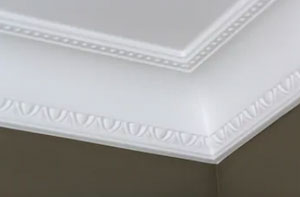 Plastering Near London
Plastering Near London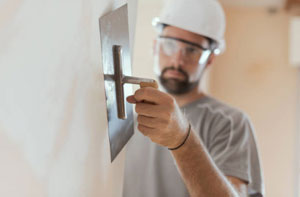 Plasterer London
Plasterer LondonMore: Plastering Repairs, Plaster Patching, Plaster Repairs, Domestic Plastering, Plastering Contractors, Plastering Companies, Plaster Repairs, Patch Plastering, Commercial Plastering, Commercial Plastering, Plastering Contractors, Plastering, Pebble Dashing, Commercial Plastering, Plasterer, Plastering, Plastering Contractors, Domestic Plastering, Cheap Plasterers, Pebble Dashing, Plastering Specialists, Plastering Contractors, Cheap Plasterers, Plasterers, Plasterers, Plastering Contractors, Plastering Companies, Plasterers, Cheap Plasterers, Patch Plastering, Patch Plastering, Internal Plastering, Plaster Repairs.
For local London info look here
Plastering Jobs London: Find plastering jobs in London here: Plastering Jobs London
Plasterers in SW1 area, (dialling code 020).
Polished Plaster London - Plasterers London - Plasterboarding London - Plastering London - Cheap Plasterer London - Screeding London - Artexing London - Rendering London - Plasterer London





